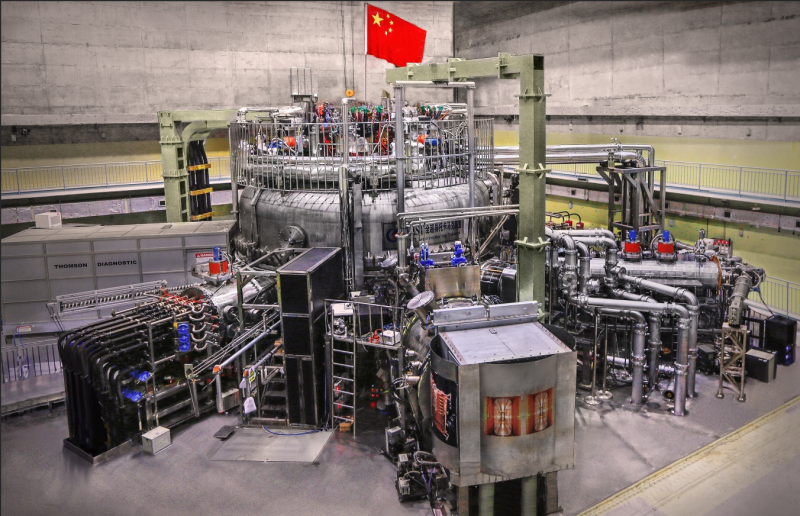Experimental Advanced Superconducting Tokamak
As world's first superconducting tokamak, EAST(Experimental Advanced Superconducting Tokamak) has three distinctive features: non-circular cross-section, fully superconducting magnets and fully actively water cooled plasma facing components (PFCs) , which will be beneficial to the exploration of the advanced steady-state plasma operation modes. Compared with ITER (International Thermonuclear Experimental Reactor project), EAST is smaller but similar in shape and equilibrium, yet more flexible. Its construction and physics research will provide direct experience for ITER and CFETR(China Fusion Engineering Test Reactor), and will ultimately contribute to the development of fusion energy. During over 10 years’ construction period of ITER, EAST will be one of the very few international devices that can be an important test bench for conducting ITER-related steady-state advanced plasma science and technology research. In recent years, EAST auxiliary heating systems were put into operation, EAST is equipped with all ITER-related auxiliary heating and current driven systems. Together with a batch of new diagnosis is completed, EAST physics research ability has been greatly improved, it will lay a solid foundation for the future high level scientific experiments in EAST. It's overall targets and research orientation is aiming at the forefront of world’s fusion R&D, ASIPP (Institute of Plasma Physics, Chinese Academy of Sciences) will cooperate with fusion research institutes and laboratories at home and abroad, and conduct fundamental physics and engineering research on advanced tokamak fusion reactors with steady, safe and high performance so that the institute can provide a scientific base for experimental reactor design and construction and promote the development of plasma physics as well as the related subjects and technologies. EAST construction and physics research can provide direct experience for the construction of ITER project in the following aspects:
● Challenge of engineering physics posed by steady-state operation of full superconducting tokamak.
● Countermeasures of real-time control and safe operation for approaching the fusion reaction steady-state tokamak operation.
● Exploring the plasma physics associated with high-power steady-state auxiliary heating, especially the behavior of energetic particles.
● Investigation of confinement and transport of plasma for advanced steady-state operation scenarios.
● Research on plasma-wall interaction towards steady-state divertor operation.
● R&D of auxiliary heating, diagnostics and control for future fusion reactor.

Contact: Yin Hongxing
Email: yinhx@ipp.ac.cn